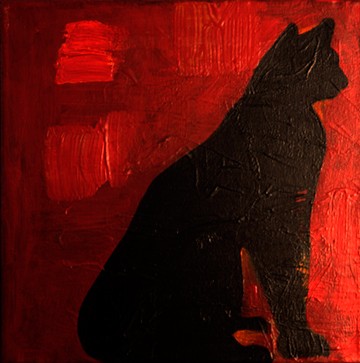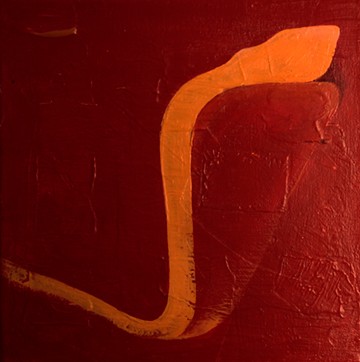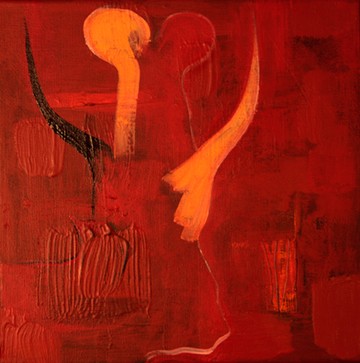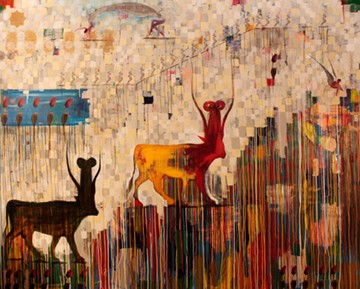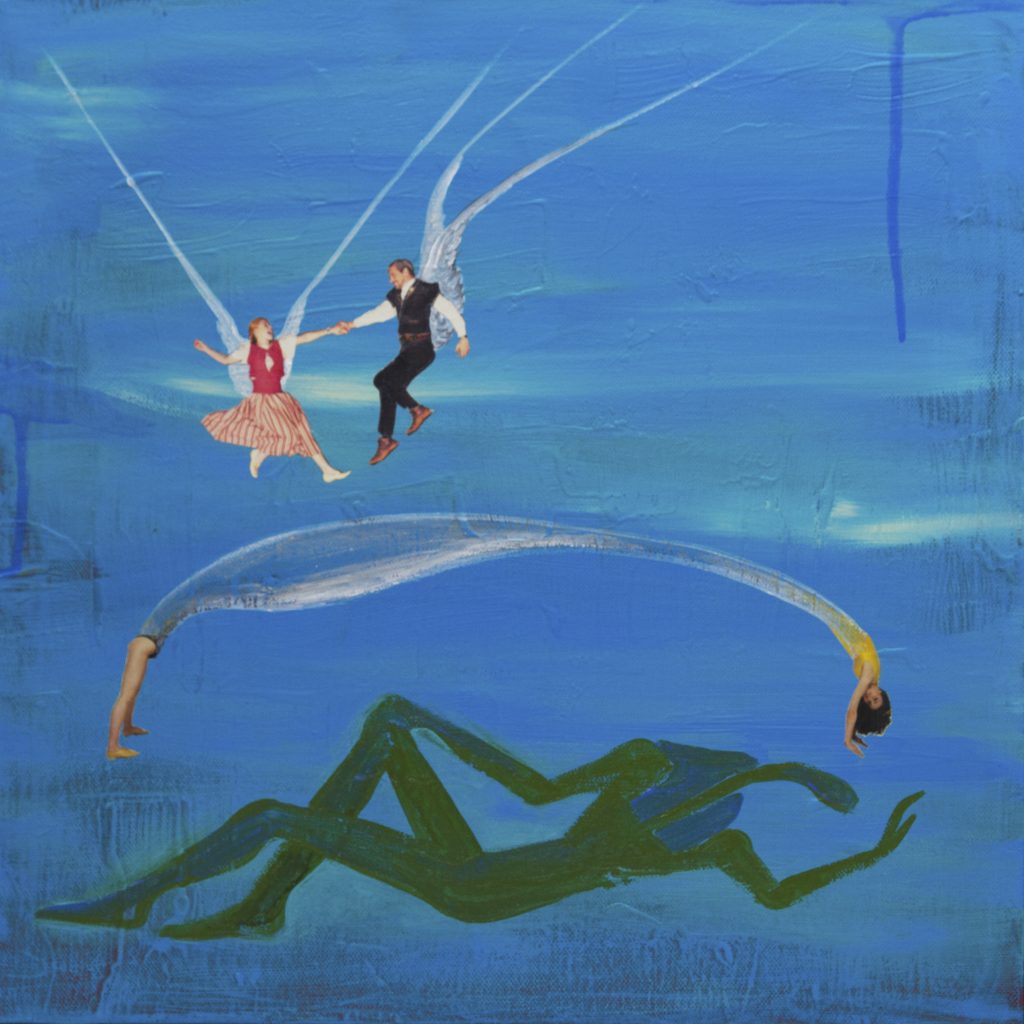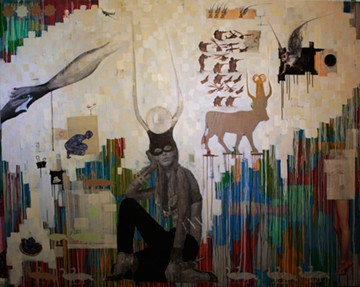In the beginning of 2012, Hafez presented On Code, Symbols and Stockholm Syndrome.
The symbol of the ancient Egyptian goddess Hathor, often represented as a cow, plays a prominent role as apparent in the work Two Stockholm Hathors and One Nute. In Hafez’ opinion, Hathor is a nourishing deity, who is even sacrificing her own flesh for people to eat and live(1). Like in ancient Egyptian mythology, Hathor personifies the principles of joy, motherhood and love. The surface of the canvas displays a bright colour palette. It corresponds to the flat and graphic surface of ancient Egyptian tomb walls. As stated by Yasmine Allam, ”His narratives are created using the rules of ancient Egyptian painting with flat graphic surfaces and human forms striding across rigid registers”(2). However, the impression of flatness vanishes immediately if one looks closer at the canvas. The texture of the painting is very rich: The highly complementary aligned colour palette is applied in thick layers evoking manifold dripping lines that dominate in particular the lower part of the canvas symbolizing for Hafez the diversity of people in Tahrir Square, all coming from different walks of life(3).
In contrast to the vivid play of dripping colors, the upper part is dominated by white, fawn and grey stone colours forming irregular quadrates of brush calibres. In compliance with Hafez they symbolize compartmentalization and boxing in their delimited form, a form of isolation(4). The upper half of the painting also shows a line of runners moving from left to right on a path leading upwards. Besides the Egyptian gods, the runners play a prominent symbolic role in Hafez’ artistic concept. He thereby plays with the word flight in its several meanings as escaping, as flying, as climbing and as running. Thus, the runners can represent the flight from one identity to another, migration, forced mobility, exodus or simply climbing from one level to another. According to Hafez, this flight can be from East to West like brain-drain or as a flight into oneself as an isolation(5).
Apart from the prominent two Hathor figures and the runners, the painting shows a variety of diverse other symbols such as tulips and Islamic stars. According to his geographical and cultural background, the viewer’s interpretation and decoding of the respective symbols may differ. Nevertheless, the viewer will immediately understand that they allude to the different layers of Egyptian identity. Once again, the artistic concept challenges apparent dichotomies such as religious versus secular. Whereas the Islamic star refers to religious streams of thought, the tulips carry a profane sensual and sexual reminiscence for Khaled Hafez(6). The use of collage technique together with the dripping paint thereby reinforces the notion that these binaries, like the painting, are constructed(7). Hence, Hafez critically explores the use of binary models in current uprisings and the associated role of the media, ideology and the quest for power. Through the title of his series, Hafez compares the current political disorientation with the psychological phenomenon of the Stockholm Syndrome in which the hostages express empathy toward their captors. He thereby describes post-revolutionary politics as “the ‘kidnapping’ or ‘hijacking’ of the Egyptian revolution by regressive forces”(8).

